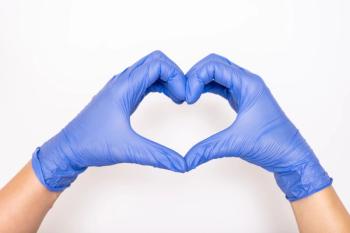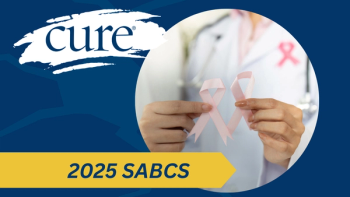
Art Therapy: Let Your Creative Juices Flow
The benefits of art therapy are bountiful. Doctors are finding art helpful in healing patients. Those affected by cancer can benefit from the use of art therapy.
For people with cancer, the benefits of art therapy are invaluable. Doctors have begun to realize the results of art therapy among their patients and are finding it to be a great stress reliever and avenue for helping patients cope with pain.
According to an
Art has been used as a means of expression and communication for thousands of years. Scientists have discovered the walls of caves all over the world covered in cryptic markings made by cave dwellers. Egyptians left detailed hieroglyphics to decorate their tombs. These markings not only provide helpful information for scientists, they also convey an important message of self-expression.
In the 1940s, art therapy was developed into a discipline. The original referral to the use of art as therapy originated with Adrian Hill. Mr. Hill, institutionalized while suffering from tuberculosis, suggested fellow patients join him in art projects. His studies contained valuable information and are published in a book entitled, “Art Versus Illness.”
Hill's information prompted others to begin studying the benefits of art in healing. Artist, Edward Adamson used Hill's techniques with British patients confined to mental hospitals in Surrey, London. These patients were allowed to create freely without judgment. His purpose was to allow self-expression, not psychological interpretation.
Following Hill and Adamson, the United States noticed two pioneers of art therapy Margaret Naumburg and Edith Kramer. Naumburg, Austrian born, studied art, painting, drawing and sculpture in Vienna. She founded an art therapy graduate program at New York University after becoming a U.S. citizen. Her concept of art therapy was allowing the patient to unleash unconscious thoughts and feelings by encouraging free association. The artwork would then be used to help the patient understand and analyze thoughts and feelings.
I'm a huge proponent of art therapy. Although I've never studied art and have no artistic training, I've always found art enjoyable. My first experience with expressive art was probably during first grade when I was given a piece of paper and a box of crayons. Discovering I had the ability to create was empowering.
After breast cancer, I did my best to find ways to cope with what I was feeling. Art became a creative outlet. The cancer treatment center nearby offered art courses for breast cancer patients and survivors at no cost. It was a great opportunity for those affected by cancer to connect.
Sometimes I visited and participated in classes, but the majority of the time I preferred to work alone at home. When home, I can wear comfortable clothes, crank up my stereo and work freely. It's nice to allow myself time to be uninhibited. While the creative juices flow, I am overcome by a wonderful healing power. As I create, I can channel my pain into the art.
This week, I've started a new art process called acrylic pouring. I was able to learn the process by watching YouTube videos. Pouring involves acrylic paints, pouring mediums and silicone. It's fun and addictive.
Art has been extremely helpful to me in my breast cancer recovery. As I'm working on an art project, no matter what medium I'm using, it's easy to get lost in the project. While working, my mind is focused, and I don't think about anything else. It doesn't matter if my back is screaming out in excruciating pain or if my arms are swollen with fluid from lymphedema, I just keep on working.
As I look over the pieces I've created this week, my emotions are evident. When I was feeling peaceful and well rested, I painted a wonderful ocean scene, filled with beautiful shades of blues, seafoam green and white. I was also thinking about planning an upcoming vacation. Another piece is chaotic - filled with an array of bright colors but tainted with splashes of black. That day was one of feeling conflicted and confused. I'd been stressing about an upcoming checkup and couldn't help but wonder if test results might indicate cancer had returned. There are many paintings among my collection and each one has been cathartic.
Staying busy has been a vital part of my healing process. Though it's been three and a half years since my initial diagnosis, I still feel myself in the midst of healing. I'm not sure I'll ever be completely whole again and that's OK. My life often feels like a masterpiece in progress. Some days beautiful colors meld together to create a sweet memory and other days, they're scraped away and repoured. Life moves at such a swift pace and just like the liquid paint that pours from my container onto the canvas, it travels exactly where it chooses. Sometimes settling into deep crevices and sometimes sliding over the edge. We have no control, although we often think we do.
It would be nice if all medical doctors would recommend art therapy to their patients. I could just imagine, at the end of a visit, a doctor pulling out his prescription pad and telling the patient to wait just one more minute while he scribbled a note. Upon handing the prescription to the patient, the words on the script pad would read something like this: "Art therapy, dose TBD by patient. Medium TBD. PRN for optimal health." (Translation: art therapy dose to be determined by patient. Art medium to be determined. As necessary for optimal health.)
It's important to do whatever we can to stay as healthy as possible. Art therapy is an easy way to do that, so I say, "Be creative!" Even if you've never had a single art lesson, you can make art. And after all, beauty is in the eye of the beholder, as they say. Don't worry about what appeals to others, use art as a creative outlet to move from continually focusing on your health to focusing on joy. The one thing you have that nobody else has is your creative mind, your story, and your vision. So, write, draw, paint, build, dance and play. Live as only you can and enjoy doing it.




